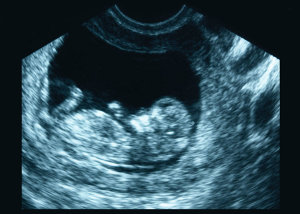Error and medical third party liability insurance
Evolving towards a medicine judicature
 Medicine has evolved a great deal; it has become technical and multi-disciplinary. The individualisation of error behind the damage and that of its perpetrator has become difficult especially as regards hospital establishments where doctors are regarded as civil servants.
Medicine has evolved a great deal; it has become technical and multi-disciplinary. The individualisation of error behind the damage and that of its perpetrator has become difficult especially as regards hospital establishments where doctors are regarded as civil servants.
Everywhere around the world and particularly in industrialized countries, the 2000s have marked a turning point in the way patients relate to medical care. The multiplication of lawsuits and claims against doctors have become commonplace. Media coverage of the most spectacular cases has only fuelled the issue, which triggered a negative effect on medical practice and a consistent increase of third party liability insurance premiums.
Lawyers' firms, in search for big cases, are offering their services to victims of medical accidents. Private appraisal firms are specializing in the evaluation of morbidity risk and hospital mortality. Some have suggested the installation of video camera systems to film surgeries live so as to monitor compliance with technical procedures.
 Because of actual or exaggerated fear pertaining to lawsuits lodged by medical error casualties or their families, we are witnessing a more frequent recourse to caesareans, risky foetus examination in order to pick up any probable abnormality. Some doctors are even reluctant to reanimate premature babies for fear of any repercussions.
Because of actual or exaggerated fear pertaining to lawsuits lodged by medical error casualties or their families, we are witnessing a more frequent recourse to caesareans, risky foetus examination in order to pick up any probable abnormality. Some doctors are even reluctant to reanimate premature babies for fear of any repercussions.
Speciality medicine is going through a crisis that is worsening, which could have serious and lingering effects on the quality of medical care. Distressed by events that are penalizing their profession, some doctors are fleeing activities which are questioning their responsibility while risky specialities are being deserted. The most targeted are those practised on a technical podium at hospital establishments, obstetricians, foetus ultrasonographers, surgeons, anaesthetists, resuscitators, …
Legal principles of third party liability and medical duty
 The concept of medical error dates back to Hippocratic Oath and to the corpus of the profession's code of ethics. It remains today as one of the most controversial issue between legal experts and doctors. The new social evolutions are compelling law professionals to indulge in continuous reflection and updating:
The concept of medical error dates back to Hippocratic Oath and to the corpus of the profession's code of ethics. It remains today as one of the most controversial issue between legal experts and doctors. The new social evolutions are compelling law professionals to indulge in continuous reflection and updating:
- In France, article 1382 of the Civil Code which dates back to 1810 defines the principle of public liability as : “Any act performed by man that causes damage to other men compels the perpetrator to make repair for that act”
- The Mercier order (1936) sets the framework for the doctor-patient relationship as follows: “A contract is established between the doctor and their patients whereby the doctor is required, not to cure the patients, but to provide them with the appropriate medical care in conformity with the knowledge acquired from science, except for specific circumstances”
Contractual liability
It is that of the liberal doctor or hospital physician who performs a liberal act. Contractual liability rests on the error that the claimant has to provide evidence for. Error results from the non-fulfilment of contract terms. The statute of limitations is of thirty years old.
Medical care contract : requirements in terms of means and not of results
 Established between the doctor and the patient, the medical care contract is oral (except for specific cases), tacit, sui generis and binding for both parties. It stipulates:
Established between the doctor and the patient, the medical care contract is oral (except for specific cases), tacit, sui generis and binding for both parties. It stipulates:
Doctor's obligation
- To honour one's humanitarian duties as well as those pertaining to attention, caution, vigilance and proficiency. The doctor is required to show respect for the patient and for his dignity. This respect refers to:
- the obligation to intervene only with the patient's consent
- the assistance duty
- confidentiality
- Provide medical care: With medical results being uncertain, the doctor is not required to cure the patient. It is, therefore, not a result requirement. Nonetheless, health professionals have to make use of all necessary resources and means, available by scientific knowledge, to try to cure or to ease the patient's pain, thus covering the obligation of means.
Patient's obligation
- to abide by the prescription
- to honour one's practitioner
Examples of errors
Error of negligence or carelessness: confusion in the surgical field, leaving a compress or an instrument inside the body of the patient undergoing surgery.
Illicit acts: Euthanasia, acts devoid of any therapeutic purpose, the so-called sterilisation of “convenience”.
Humanitarian failure: Absence of patient's consent, denying patients medical care, lack of information or misinformation of patients by doctors, …
Violation of medical confidentiality.
Third party liability of the medical profession
 Because doctors perform a risky activity within an organized profession, they have to be accountable for their acts to their peers and patients. In case of a proved fraudulent act pertaining to his exercise, a doctor is liable in civil as well as in penal terms.
Because doctors perform a risky activity within an organized profession, they have to be accountable for their acts to their peers and patients. In case of a proved fraudulent act pertaining to his exercise, a doctor is liable in civil as well as in penal terms.
Health professionals' liability is characterized by its complexity as it stands on the borderline between two fields : the legal and the medical ones.
The notion of liability, being central to law, conveys in medical terms the cumulative necessity of an error, a damage caused to the patient and of a causality link between the error and the damage.
The doctor's means obligation signifies that medical liability is a responsibility by fault, that is, a doctor can be convicted only when the victim provides evidence of fault affecting his person. It could be a medical error or a failure in the organisation of service.
Medical professional third party liability insurance
The case of France
The sector of medical professional liability insurance witnessed in 2001 an upheaval due to two events:
- By authorizing the indemnification of a handicapped child for the damage resulting from the error of non-detecting his handicap, the order number 486, dated November 28, 2001, and called “Perruche”, provided by the plenary assembly of the cassation court, has triggered fear among practitioners and insurers of a growing dispute and of mounting indifference for medical risks by insurance companies. The Perruche order contains the risk of encouraging American practices in the field of medical accidents indemnification.
The “Perruche” order
 “As the errors committed by the doctor and the laboratory in the fulfilment of the contracts brokered with Mrs PERRUCHE had prevented the latter from exercising her right to terminate her pregnancy in order to avoid the birth of a handicapped child, the latter shall be entitled to damages resulting from the handicap and caused by the proven errors”.
“As the errors committed by the doctor and the laboratory in the fulfilment of the contracts brokered with Mrs PERRUCHE had prevented the latter from exercising her right to terminate her pregnancy in order to avoid the birth of a handicapped child, the latter shall be entitled to damages resulting from the handicap and caused by the proven errors”.
- The adoption of the Kouchner law of March 4, 2002, supplemented by the About proposal of December 30, 2002 has eased the provisions and reduced the damage of the Perruche decree. By stipulating: “None can take advantage of a prejudice deriving from the sole fact of one's birth”, this law deprives the child whose handicap went undetected during pregnancy from the possibility of getting indemnified, and attributes the charges pertaining to the handicap to the national solidarity fund. The legislation sets the indemnification rules for victims of medical accidents, institutes an automatic system of indemnification of hospital-acquired infections and submits health professionals and establishments to insurance of professional third party liability.
Professional third party liability Insurance policy
The professional third party liability insurance covers financial consequences of the material and immaterial bodily damages that the insured may cause to a third party during the course of one's activities.
An additional guarantee is quasi-automatically stipulated in third party liability contracts : ‘legal protection'. This guarantee allows the cover of the legal expenses of the insured before any civil, administrative, ordinal or penal jurisdiction.
The medical third party liability insurance is drafted in the form of “all risks except”. This means that the basis of this insurance rests on the exceptions that are stipulated in it: if the risk is not submitted to a contractual exclusion, it is covered and vice versa.
The notion of professional third party liability insurance has been integrated in the insurance code. Liability insurance is compulsory for public or private establishments (hospitals, clinics, people's dispensaries, foundations...), physicians, surgeons, dentists, chemists, nurses, liberal physiotherapists, and producers, users and suppliers of medical products.
Default to insurance obligation is punishable by a fine that amounts to 45 000 EUR (70 000 USD).
The shape of the French medical insurance market
The French segment of medical insurance is characterized by:
- the narrowness of the market
- the shrinking insurance offer related to the growing claims made by medical accidents victims and the contraction of the amounts for victim indemnification
- the limited number of stake holders due to the disengagement of some market players
- the scale of uncertainties fuelled by legislative modifications
- the inadequacy of the devices designed for the prevention of medical accident risks
 The medical third party liability is a subcategory of the third party liability class of business which accounts for just 15% of the turnover. This limited profitability, behind the degradation of the companies' technical accounts, has prompted insurers to disengage gradually. But it is in the wake of the so-called Kouchner Law, passed on March 2, 2002, which has reshaped the foundations of medical insurance in France that insurers proceeded to a massive withdrawal from the professional third party liability market, among which, the companies Saint Paul and ACE which used to accumulate the biggest portfolio of the contracts. As a consequence of this desertion, insurance companies have selected risks and a black list of practitioners has been created compelling the biggest losers to terminate their surgical activities and for some others to make recourse to foreign insurers who propose attractive tariffs such as the Irish company MIC.
The medical third party liability is a subcategory of the third party liability class of business which accounts for just 15% of the turnover. This limited profitability, behind the degradation of the companies' technical accounts, has prompted insurers to disengage gradually. But it is in the wake of the so-called Kouchner Law, passed on March 2, 2002, which has reshaped the foundations of medical insurance in France that insurers proceeded to a massive withdrawal from the professional third party liability market, among which, the companies Saint Paul and ACE which used to accumulate the biggest portfolio of the contracts. As a consequence of this desertion, insurance companies have selected risks and a black list of practitioners has been created compelling the biggest losers to terminate their surgical activities and for some others to make recourse to foreign insurers who propose attractive tariffs such as the Irish company MIC.
Tariff evolution
Following the 2002-2003 professional third party liability crisis, the premium's rising trend has continued but at a moderate pace. The increase was around 2000 EUR over the 2003-2006 period to reach 14 000 EUR (21 000 USD) in 2006.
In 2007 and following the decision by MACSF to retire from the market of obstetrician gynaecologists, the tariffs have reported a new rise of:
- 22 000 EUR (33 000 USD) for obstetricians, that is, a 30 000 EUR (45 000 USD) tariff.
- 30 000 EUR (45 000 USD) for surgeons, with a guarantee limited at 3 million EUR (4.5 million USD) per claim and of 38 000 EUR (57 000 USD) for a guarantee limited at 6 million EUR (9 million USD) per claim.
Loss history
According to the French federation of insurance companies, FFSA's statistics, in the speciality of obstetric liberal gynaecology, serious claims, that is, over 1 million EUR (1.5 million USD), are scarce with an average of two per year. The claims indemnification costs seem to be concentrated on a small number of heavy claims.
MACSF, the mutual which insures 2/3 of the liberal physicians in France, has reported 2 claims out of 100 insured in 2002.
The Bureau Central de Tarification, “The Central Rating Bureau”
 Practitioners may have recourse to the Bureau Central de Tarification, (BCT) established by the law 2002 and whose role is to impose on an insurer the coverage of a risk for a defined premium amount.
Practitioners may have recourse to the Bureau Central de Tarification, (BCT) established by the law 2002 and whose role is to impose on an insurer the coverage of a risk for a defined premium amount.
According to article L252-1 of the Insurance Code, “any person, subject to the insurance obligation, who has solicited the underwriting of a contract with an insurance company covering in France the third party liability mentioned in the same article, but was twice denied that service, may resort to the Central Rating Bureau.”
In 2002, a coinsurance pool was set up on the request of insurers : the Groupement Temporaire des Assurances Médicales (GTAM), (the Provisional Pool of Medical Insurance).
The Central Rating Bureau is in charge of setting the premium amount in return for which the interested insurance company is required to cover the risk that has been proposed to it.
In January 2006, the medical risks observatory was set up with a view to compiling the information designed to improve knowledge about the most typical medical accidents in terms of their frequency and their consequences.
In Anglo-Saxon countries
 In many countries (USA, Canada, Australia, Singapore, Hong-Kong, Ireland, Great-Britain, Denmark, ...) physicians who practice particularly-risky specialities have pooled up to negotiate directly and run their own insurance with insurers and reinsurers based on the creation of a risk management tool, this scheme allows doctors to set aside intermediaries and to directly control the adequacy of their insurance cost evolution according to the reported risks.
In many countries (USA, Canada, Australia, Singapore, Hong-Kong, Ireland, Great-Britain, Denmark, ...) physicians who practice particularly-risky specialities have pooled up to negotiate directly and run their own insurance with insurers and reinsurers based on the creation of a risk management tool, this scheme allows doctors to set aside intermediaries and to directly control the adequacy of their insurance cost evolution according to the reported risks.
In the United States, the news regularly offers examples of record benefits obtained by patients, victims of medical errors. Medical errors have become the eighth cause of mortality ahead of road accidents and breast cancer.
In the face of the sheer scale of the problem and its economic cost, a new law has been proposed to regulate and limit nationally the indemnifications to which patients may be entitled in the event of medical errors. The total amount of non-economic damage has been set at 250 000 USD. Compensations for cost directly imputable to medical care or for loss of income following an accident are not limited. The legal time frame to lodge lawsuits has been shortened to three years.
Medical accidents and patients' safety: a worldwide social issue
Patients' safety has become a priority recognized by health care systems worldwide.
During an international conference in Porto (Portugal in 2007), the World Health Organisation (WHO) has called for further research aimed at improving patients' safety.
The WHO estimates that each year, ten million patients, worldwide, are victims of disabling or deadly trauma resulting from hazardous medical practices.
Main causes of accidents- Hospital-acquired infections. It is estimated that 1.4 million people are victim of nosocomial infections.
- Unfavourable reaction to medicines. According to estimates, between 7% and 10% acute care patients have had adverse reactions to medicines.
- Surgery and anaesthetics: these medical acts stand among the most complex and even the most costly acts to be insured by the health care system. Adverse events in surgery room account for 50% of all unfavourable events.
- Risky injections: risky injections are claiming the lives of 1.3 million people a year worldwide and would account for 26 million years in lost lives as well as an annual expenditure of 535 million dollars in direct medical costs.
- Non-secured blood products. It is estimated that 5% to 15% of cases of HIV infections in developing countries are caused by blood transfusion.
- Standardizing the manufacture and labelling of perfusion
- Identifying by means of colour codes the catheter pipes and syringes
- Banning the reuse of mono-purpose gear (vector of infectious contaminations)
- Highly promoting hand hygiene among health care staff through the use of alcohol-based disinfecting gel
- Putting in place risk prevention devices